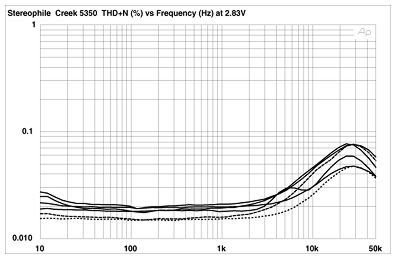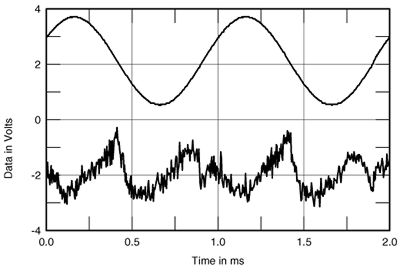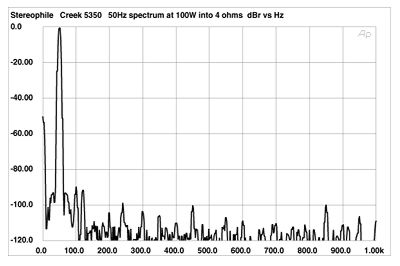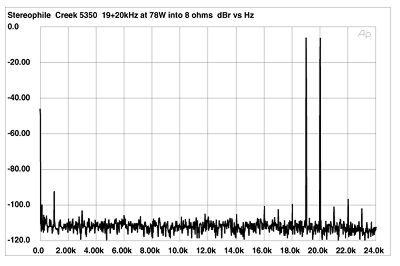| Columns Retired Columns & Blogs |
Creek 5350SE integrated amplifier Measurements part 2
Small-signal distortion levels were generally low (fig.5), varying little with load impedance and with the usual rise at high frequencies. As can be seen in figs.6 and 7, that distortion is predominantly the subjectively innocuous second harmonic in content. Levels of intermodulation are also very low. Even just below clipping with the demanding 19+20kHz twin-tone signal (fig.8), the 1kHz difference component lies below -92dB (0.003%). About the only clue that this is a component with a real-world-sized power supply rather than some big-bucks super-amp is the appearance of a 120Hz power-supply component in fig.7; clearly, the amplifier is working hard at this power level. But as this component is still 90dB down from the fundamental, it is nothing to be concerned about.

Fig.5 Creek 5350SE, THD+noise (%) vs frequency at (from top to bottom at 5kHz): 2.83V into simulated loudspeaker load, 4W into 2 ohms, 2W into 4 ohms, and 1W into 8 ohms.

Fig.6 Creek 5350SE, 1kHz waveform at 54W into 4 ohms (top), distortion and noise waveform with fundamental notched out (bottom, not to scale).

Fig.7 Creek 5350SE, spectrum of 50Hz sinewave, DC-1kHz, at 100W into 4 ohms (linear frequency scale).

Fig.8 Creek 5350SE, HF intermodulation spectrum, DC-24kHz, 19+20kHz at 78W into 8 ohms (linear frequency scale).
- Log in or register to post comments




































